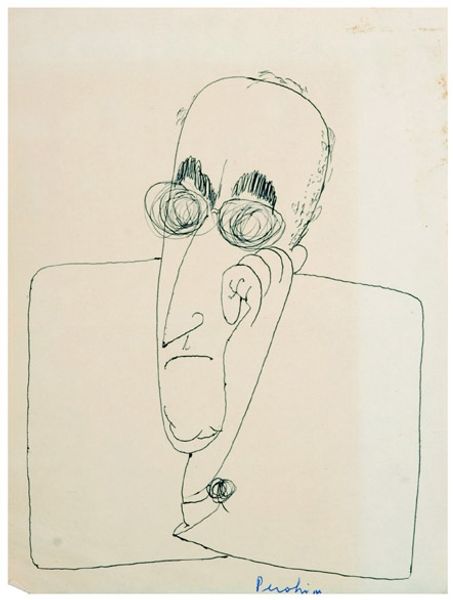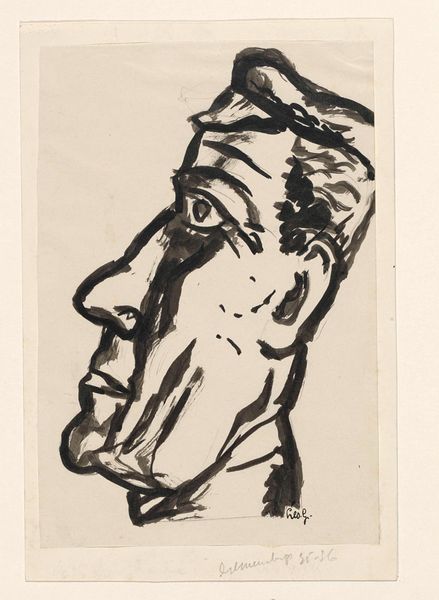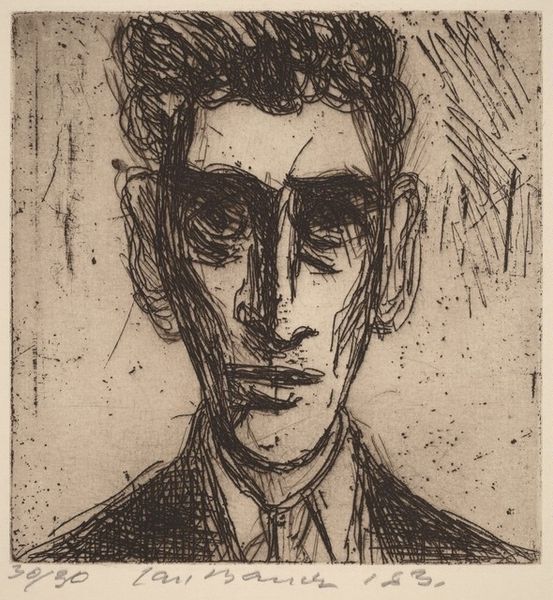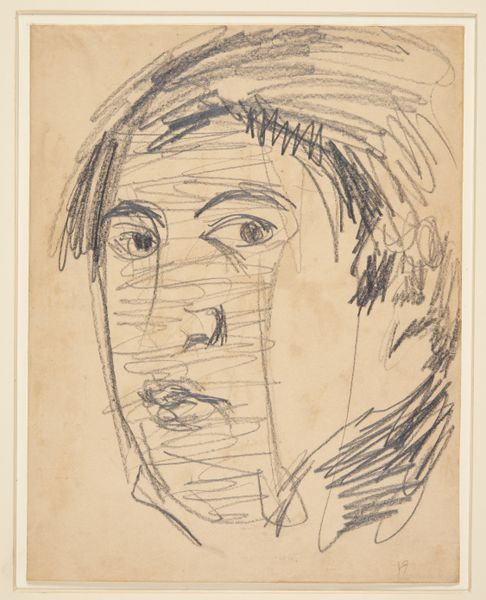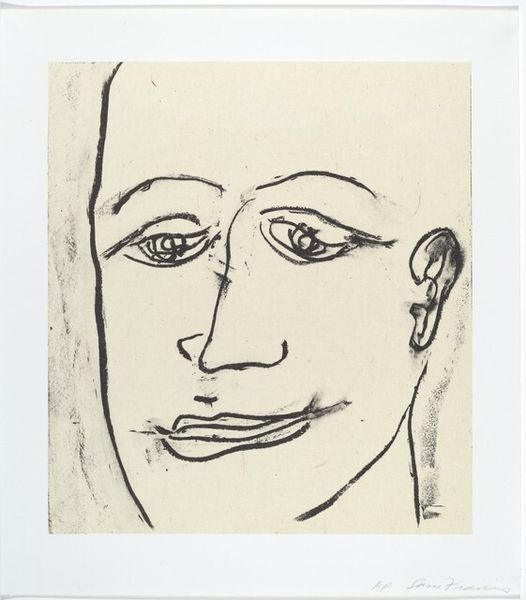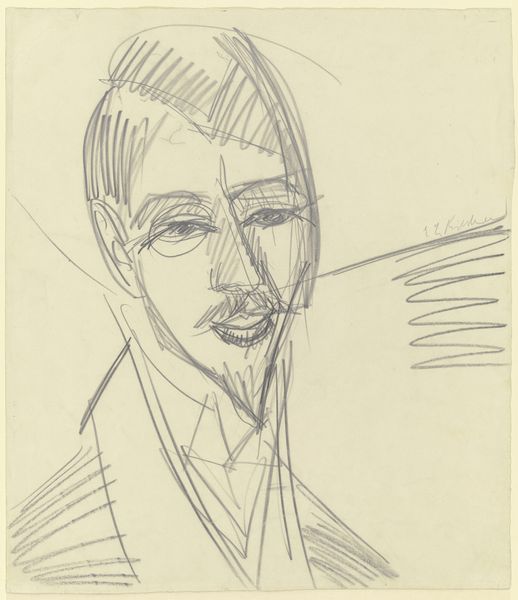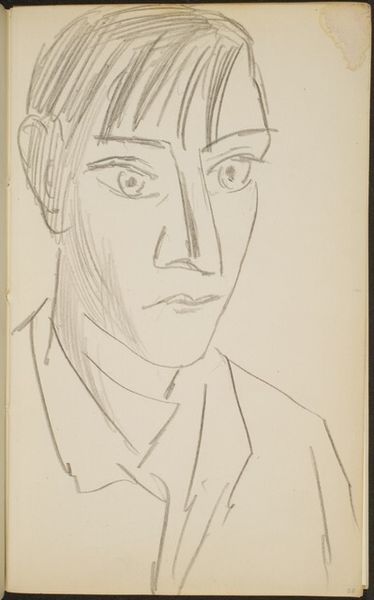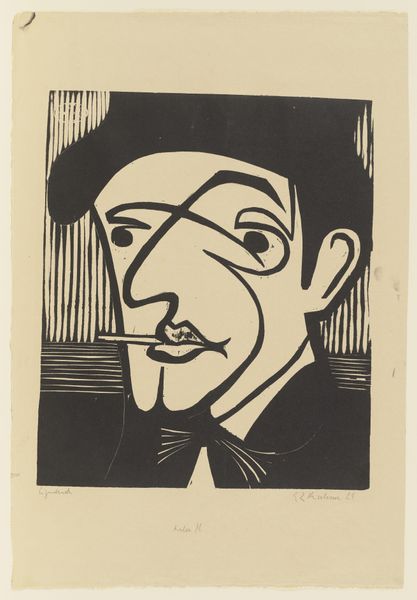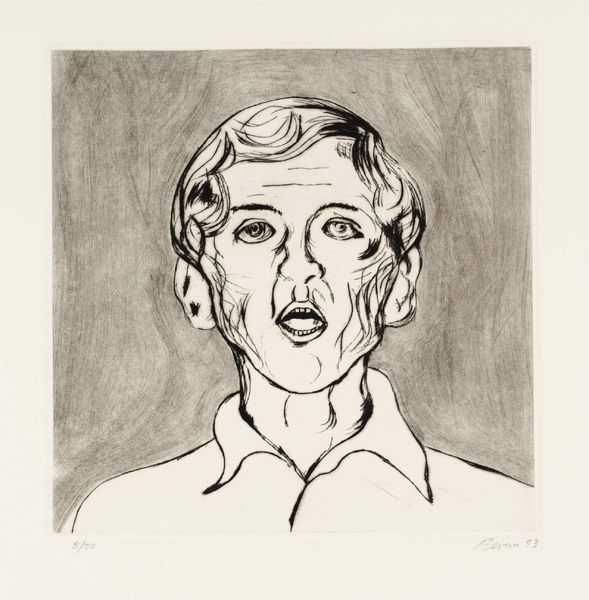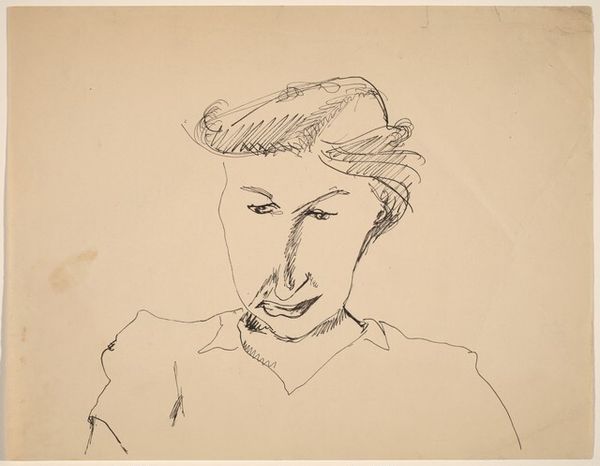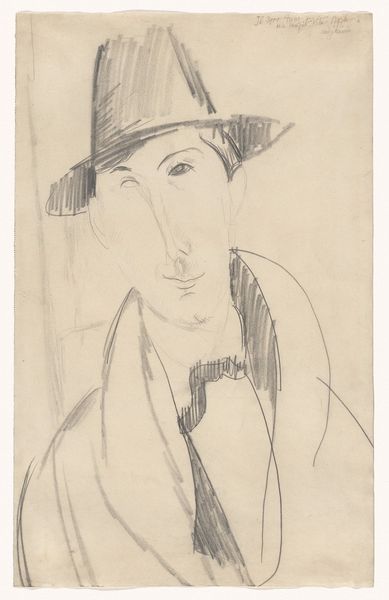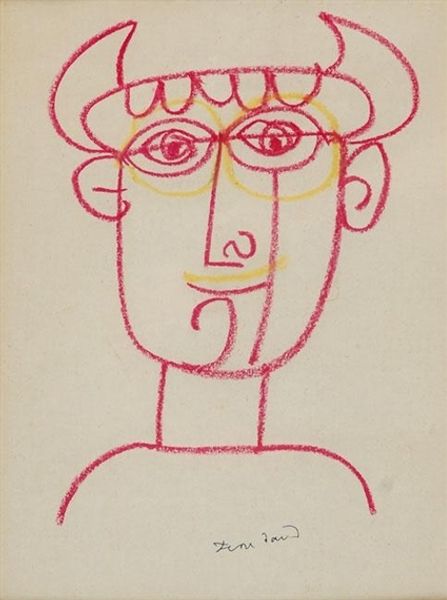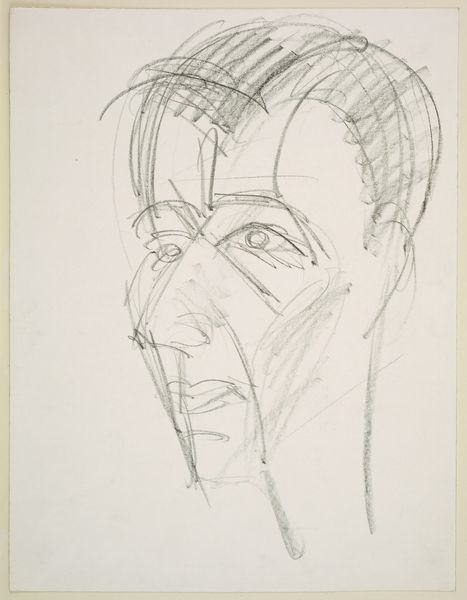
Dimensions: overall: 38.4 x 32 cm (15 1/8 x 12 5/8 in.)
Copyright: National Gallery of Art: CC0 1.0
Jean Dubuffet created this portrait of Jean Paulhan in July 1945, using gouache, ink, and pencil on paper. It’s a study in contrasts, materially and conceptually. Dubuffet deliberately chose simple materials, rejecting any sense of preciousness. Gouache is an opaque watercolor, known for its matte finish and ease of use, while ink and pencil are similarly direct. The application is raw, almost crude, with visible brushstrokes and a lack of blending. This unsophisticated approach was entirely deliberate, a challenge to the conventions of fine art. Dubuffet aimed to capture an authentic, unvarnished view of humanity, a concept he called "Art Brut," or raw art. He was interested in the art of outsiders, children, and the mentally ill, believing that their work was free from the constraints of academic training and cultural norms. By embracing this aesthetic, Dubuffet questioned the values of a society obsessed with refinement, inviting us to reconsider what we consider art, and who gets to make it.
Comments
No comments
Be the first to comment and join the conversation on the ultimate creative platform.
